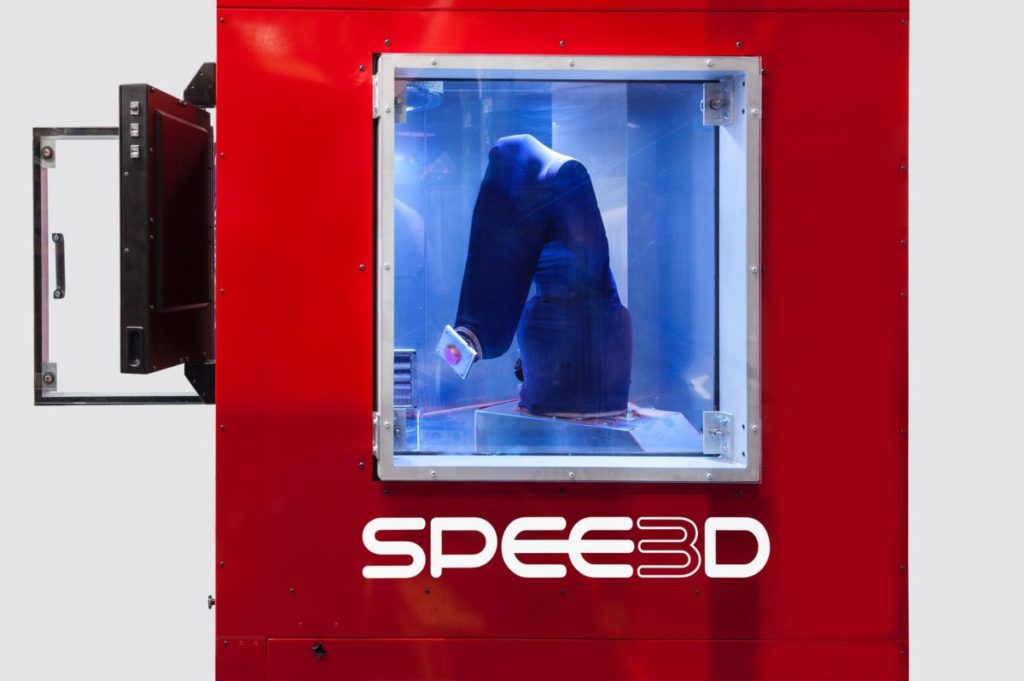Australian company SPEE3D works hard to make metal additive manufacturing easier, and faster, for customers through its patented supersonic 3D deposition (SP3D) technology, which utilizes cold spray additive manufacturing (CSAM), kinetic energy, and a rocket nozzle to accelerate air up to three times the speed of sound to produce super-sized parts, such as rocket nozzles. Both the Australian Navy and the Australian Army have put SPEE3D’s large-scale 3D printing to the test before, and now it’s about to move to American soil, as Phillips Federal, a division of the Maryland-based Phillips Corporation, is using the technology to support its AM programs and Public Private Partnership (P3) at the US Army’s Rock Island Arsenal (RIA).
“We are very pleased to join forces with SPEE3D at RIA,” said John Harrison, the President of Phillips Federal. “Their unique technology and capabilities will be located at RIA’s Center of Excellence for Advanced Manufacturing in the support of developing future applications for expeditionary forces. SPEE3D adds another terrific dimension to our P3’s growing scope of additive solutions supporting RIA’s manufacturing innovation objectives.”
A major Army installation, the RIA is located on the Mississippi River in the state of Illinois, and employs more than 6,000 military, contractor, and civilian personnel, with over 80 tenant organizations that provide critical services and products to the country’s armed forces residing there as well. Now, SPEE3D says that by adding its LightSPEE3D system to the powerful AM lineup at the arsenal, many of the US Army’s readiness challenges in the field today will be addressed.
The SPEE3D 3D printing systems work on “a cold fusion principle,” as the company states in a press release, where the metal powders are fused using compressed air, as opposed to using volatile heat sources or gas to do so. Basically, the machine hurls metal particles at supersonic speeds directly at a printing substrate, which causes them to bond together into layers by the use of sheer force alone.
The Melbourne-based company recently modified its technology to print onto existing metal surfaces in order to help during the ongoing COVID-19 crisis. Copper is able to kill a lot of SARS-CoV-2 germs on contact very quickly, even more than stainless steel. So SPEE3D used its antimicrobial ACTIVAT3D Copper process to print the material onto metal, killing 96% of the virus in just two hours and 99.2% in five hours.
Recent trials with the Australian Army show that the company’s WarpSPEE3D and award-winning LightSPEE3D printers, which can, respectively, print parts up to 1 x 0.7 m and 350 x 300 mm in size, are robust enough to be used out in more severe environments, like a combat situation, which makes them, according to SPEE3D, “an ideal expeditionary solution” for on-demand 3D printing of components directly at the point of need. As the armed forces of the United States are always on the lookout for manufacturing solutions that can work successfully in the field, it seems like SPEE3D’s systems will more than fit the bill.
“This is another very exciting announcement for SPEE3D,” stated SPEE3D’s CEO Byron Kennedy. “This RIA programme, in parallel with similar projects happening with The Royal Australian Navy, Army, and Special Forces, will enable the world’s Defence Forces to grow sovereign capability and lead the world in the field of Additive Manufacturing.”
(Source/Images: SPEE3D)
Subscribe to Our Email Newsletter
Stay up-to-date on all the latest news from the 3D printing industry and receive information and offers from third party vendors.
You May Also Like
AM Under Trump, First Thoughts: Reshoring
Constrained resources and the need to fight climate change have led to a new era of manufacturing focused on re- and nearshoring paired with supply chain resilience. In the battle...
Dyndrite Forms Strategic Partnership with Nikon SLM Solutions for Metal 3D Printing
Dyndrite, the Seattle-based software provider specializing in solutions for digital manufacturing technologies, has announced a strategic partnership with Nikon SLM Solutions to integrate Dyndrite’s LPBF Pro software with Nikon’s metal...
Nikon SLM Hits 1000th 3D Printer Milestone with Bosch Purchase
Nikon SLM Solutions has reached a significant milestone with the production of its 1000th NXG XII 600 system, among the most productive metal additive manufacturing (AM) systems in the industry....
Themes from AM Investment Strategies: Collaboration, Cost Challenges, and Expanding Markets
The 2024 Additive Manufacturing (AM) Investment Strategies event went off without a hitch. The online roundtable, hosted by AM Research (AMR) and Cantor Fitzgerald, dug into the latest trends and...







































